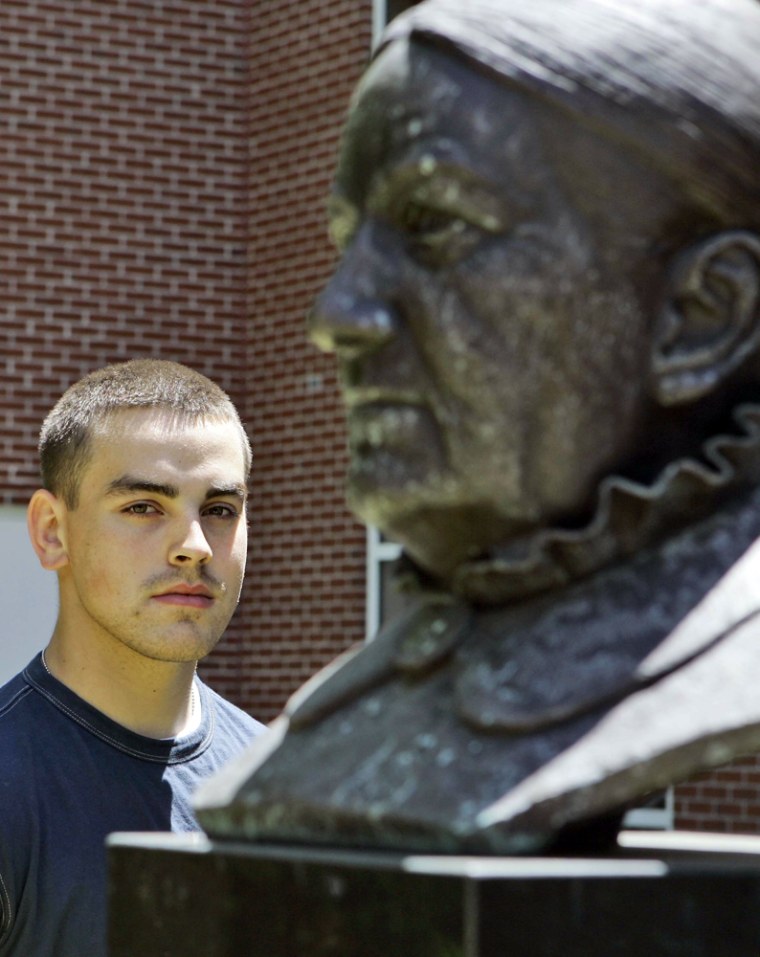Michael Roberts has done more than study finance at historically black Benedict College. He’s played football for the college, joined a fraternity and proposed to his girlfriend.
Pretty typical, except that Roberts is one of the few whites who attend one of the nation’s traditionally black colleges.
“When I tell people I attend Benedict, they comment, ’Well, you’re not black,”’ Roberts said. “But it’s still a school, I’m still getting an education. You don’t have to be black to attend.”
Officials for the nation’s historically black schools say Roberts’ experience is not that unusual. White students are being actively recruited, and attracting them has become easier for a variety of reasons, including the offer of scholarships and lower tuitions than those paid at non-black schools.
Private, historically black schools cost an average of $10,000 less per year than their traditionally white counterparts, according to the National Association for Equal Opportunity in Higher Education.
'Increasingly black and brown world'
The head of the association says lower costs are not the only thing the schools have to offer. Whites who attend the schools are preparing for an “increasingly black and brown world,” said Lezli Baskerville, the association’s president and CEO.
“If you want to know how to live in one, you can’t grow up in an all-white neighborhood, go to a predominantly white school, white cultural and social events, go to a predominantly white university and then thrive in a world that is today more black, more brown than before,” Baskerville said.
White students say they’ve taken valuable experiences from their time at black colleges. Skin color, the students say, is much more of a factor away from the campuses than it is on them.
“You should get to know people based on who they are,” Roberts said. “You can’t judge a book by its cover.”
The first of what are now called historically black colleges and universities was Cheyney University in Pennsylvania, which was founded in 1837 so that blacks — barred from attending many traditional schools — could get advanced educations. Since then, more than 100 such institutions have been established in the U.S. and about 285,000 students attend the schools each year.
Lawsuits have forced many of the schools — about half of them are public — to diversify their student bodies, Baskerville said. In the 2005-06 school year, nearly 10 percent of their students were white, according to her association’s data.
Scholarships, new programs and recruitment have attracted dozens of whites to schools such as South Carolina State University, where they account for around 4 percent of the student body, said university spokeswoman Erica Prioleau. The school has a minority affairs office for white students, similar to those found for non-white students at traditionally white schools.
A handful of whites attend Atlanta’s private Morehouse College. The school hasn’t been aggressively recruiting whites, so they make a “conscious decision” to attend, said Sterling Hudson, dean of admissions and records for the college.
Refuge where 'race doesn't really matter'
Steven Schukei did just that. The Morehouse alumnus, who now works as a vice president in technology for New York-based investment firm Goldman Sachs, said he gained a perspective that he wasn’t offered while growing up and going to school in Nebraska, Colorado and South Carolina.
“There was always this sort of disjoint between what I thought I should be learning and what I actually did learn,” said Schukei, 30. “And I thought Morehouse would be an opportunity to expand my horizons and to see a different perspective on the world that we live in.”
Schukei remembers Morehouse as a “refuge from the rest of the world where what race you are doesn’t really matter.”
“Conversations that people typically wouldn’t feel comfortable having about race can happen on Morehouse’s campus where they just wouldn’t happen anyplace else,” he said.
